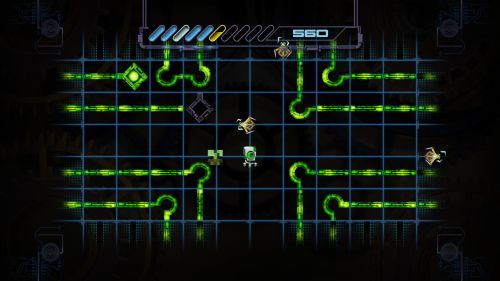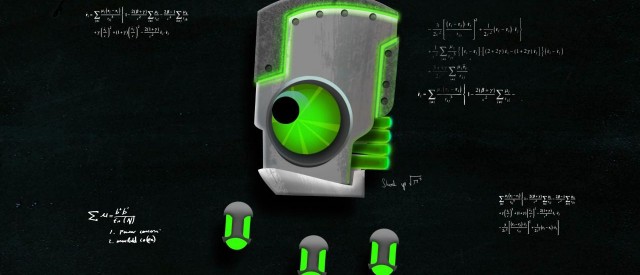Action puzzlers like A Virus Named Tom are nothing new. People have been connecting conductive conduits since the days of Pipe Dream. Even Bioshock had these puzzle elements – placed under the guise of “hacking” computers. Whether it be pipes or computer circuits, the goal is largely the same: connect everything up so the water/electricity (spice) can flow. In the case of A Virus Named Tom (AVNT), you are the eponymous creation of an inventor that has recently been fired from the company for which he once created a multitude of useful devices. Slighting a potentially unstable genius? Not the wisest choice.
The main focus of the game is that, as TOM, you need to go through all of the inventions your creator once made and infect them to ensure their operation is short-lived. To achieve this, you’ll have to go circuit-by-circuit (level-by-level) and spread the infection. This starts off simple enough: turn a piece of circuitry here, watch the green glow move about, and victory is yours! For the first few levels, it’s just that straightforward.
Then AVNT takes a left turn and introduces some new challenges to thwart your schemes, like a “cryptographic” sequence that masks the circuit pieces so you can’t tell what you’re turning, or anti-virus programs that will temporarily disrupt your infectious ways. You’ll get some upgrades along the way, such as dropping glitches that disrupt the anti-viruses, that makes it easier to complete your sinister task. So, you can keep going through all 50 of the single-player levels and go about tickling the puzzle-solving center of your brain (located near the gooey chocolate center), or you can get a bit more competitive.

Anti-virus programs and circuitry running off the screen; just a few of the challenges you'll face on your infectious path
As you clear a circuit, you receive a score based off the amount of energy (i.e., “time it takes you to spread the infection”) you have left. This energy first serves two purposes: a “failure” mechanic (run out of energy and you fail the level), and to provide you with a score at the end of the level. Clear the level with a certain amount of energy remaining awards you a bronze, silver, or gold medal, which is solely for personal satisfaction, but you also get a score. The sheer genius (and it is an evil genius, to be sure) of this mechanic, though, is that once you notice the score aspect, you start paying attention to the leaderboard that just comfortably sits unobtrusively over on the right-hand side of the level select screen.
You notice your score sitting amongst your friends’ and the game developers’. “My score’s not that far off from the top, surely I can make it to No. 1,” you think. An idea has now infected your thinking (pun intended), and it’s a tough one to shake. “It’s all about efficiency of movement; I know how to solve the puzzle, but how I can solve it in the fewest number of moves, possible,” you’ll now ruminate quietly in the dark under the soft glow of the computer screen as the clock hands slowly tick to 3 AM. I am by no means a competitive person when it comes to games, but something about AVNT changed that. “I bet I could solve it faster with my friends…”
